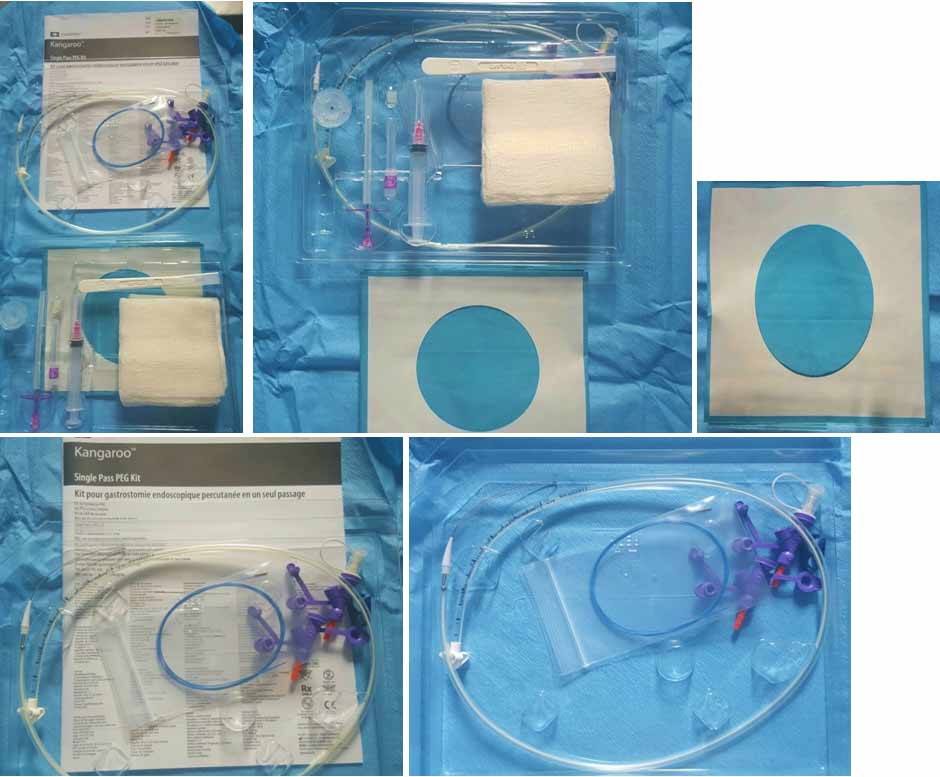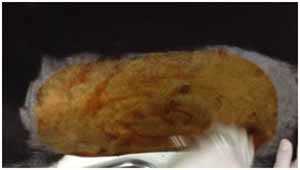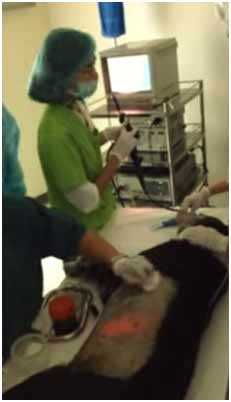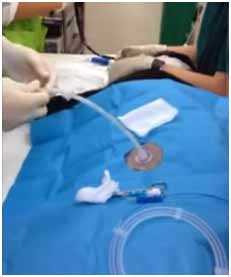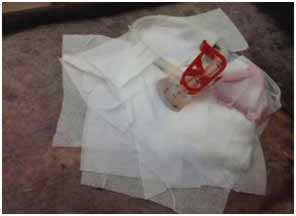Percutaneous endoscopic gastrostomy – Placing feeding tube for patients (enteral nutrition)
Percutaneous endoscopic gastrostomy (PEG) is the process of placing a catheter through a small incision in the abdominal wall, for the purpose of feeding patients – enteral nutrition. It is commonly used as a nutritional support for dogs and cats, who are unable to eat alone, thus allowing their more rapid recovery. Commercial canned food, and sometimes soaked granules can be placed through these catheters.
Setting PEG catheter is most often done in dogs and cats with trauma to the head and mouth, megaesophagus, esophageal stricture, chronic kidney or liver disease; in the presence of malignancy, neuromuscular and neurodegenerative disease. PEG is designed for pets that due to the inability of swallowing temporarily or permanently unable to enter the required daily amount of quality food and providing them with long-term solution to food.
Apart from the obvious use of PEG catheter to compensate for food, PEG catheters have a number of additional uses and advantages including the following:
- Compensation liquid can occur through the PEG catheter at home without the need for constant, repeated stabbing animals with the subcutaneous administration of intravenous fluids or placing needles.
- Application of medication can also be performed via PEG catheter, which again avoids unnecessary and daily stabbing.
- Tuba can be used to regulate gas distension of the stomach (colic), at home.
- Dogs and cats are much better tolerated PEG placement of the catheter in relation to other existing catheters for human consumption because they are small catheters, designed for long term use, often without the need of placing stitches or bandages.
- PEG catheters can be installed without having to change a few months or even years, without any special requirements in maintaining them
The installation procedure for PEG catheter
Puppies and kittens that are planned for this procedure, commonly fasted 12 hours before, because the food in the stomach increases the risk of aspiration of gastric contents into the lungs. Before induction of anesthesia on the left side of the patient shall be selected by shaving the place where will be placed PEG catheter (Figure 1). After induction of anesthesia, the patient is placed on the side and mess equipment for monitoring vital functions of the patient. Heart rate, pulse, breathing, level of CO2 and O2 saturation are actively monitored while the patient is under anesthesia to minimize complications related to anesthesia.
Top of the endoscope is introduced into the mouth and through the esophagus into the stomach. The interior of the stomach endoscopic probe thoroughly examined for the presence of pathological changes (Figure 3). Failure to detect pathological deviations, the stomach is filled with air until it touches the wall of the stomach wall of the abdomen.
Shaved place is a sterile prepared, then the PEG catheter is placed through the gastric and abdominal wall, whereby the stomach remains the only part of bulbus part (internal fixator). The endoscope is used to verify the PEG catheter is properly positioned on the surface of the stomach untrašnjoj. Outside there is a separate disk (Figure 4), which fixes the PEG catheter, thus preventing its movement from the set of the city. At the end of the procedure, air is evacuated from the stomach, the endoscope is withdrawn, a životnjinja wakes up and is slowly recovering from the effects of the anesthetic.
In most cases the PEG catheter for feeding overlaps special protective cover in order to prevent catheter trees damaged due to chewing of the patient in the recovery period. This overlay will cover most of the troops. The free end of the PEG catheter is fixed to the cover tape. Placement of the catheter or so-called stoma is cleaned daily, the next 7-10 days. Using the PEG catheter can begin 12-24 after installing.
Removing a PEG catheter
When you need to stop enteral nutrition for the patient, PEG catheter is very easily removed. Place on which the catheter was placed is closed within 24 hours of removing the PEG catheter. What is important to note is that PEG catheter should not be removed 10-14 days of its installation.
Contraindications to perform this procedure and complications
Limiting factors and contraindications to perform this procedure are patients who should not introduce a general anesthetic, the presence of disfunctional or damaged digestive tract, Related Disorder coagulation, accumulation of fluid in the abdomen and splenomegaly.
Complications after setting the PEG catheter occur rarely in the form of irritation and inflammation of the stoma, impaired patient vomiting after placing food and clogging the tube. The emergence of such complications are prevented by careful selection of patients for this procedure.

